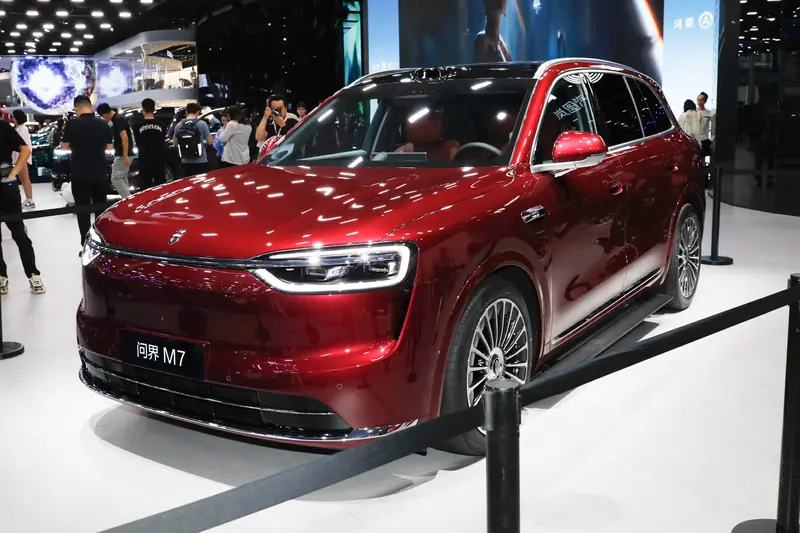In a significant move for the electric vehicle (EV) market, Huawei’s Aito M7 is gearing up for pre-orders starting September 5, 2025, with an official launch set for September 23, 2025. This new SUV promises a blend of style and cutting-edge technology, featuring a refreshed design and Huawei’s latest ADS 4 intelligent driving assistance system. What sets the Aito M7 apart is its innovative in-cabin laser vision solution, Limera, marking a first in the industry.
The Aito M7 showcases a sleek front fascia with a closed-off design, complemented by signature Aito headlight clusters. Its aerodynamic profile is enhanced by semi-hidden door handles that minimize wind resistance. The vehicle measures 5080mm in length, 1999mm in width, and 1780mm in height, with a wheelbase of 3030mm.
Interior Features
Inside, the Aito M7 impresses with a striking 16.1-inch central control screen that dominates the dashboard. The driver’s seat is designed with a “zero-gravity” feature for optimum comfort, while rear passengers can enjoy an entertainment screen equipped with multiple control options. Additionally, the vehicle includes a smart hot/cold storage box for added convenience.
Powertrains and Range
Under the hood, the Aito M7 offers both Extended-Range Electric Vehicle (EREV) and Battery Electric Vehicle (BEV) options. The EREV variant comes with two battery choices of 37kWh and 53kWh, offering a remarkable combined range exceeding 1600 km. Meanwhile, the BEV model is powered by a 100kWh battery, granting a CLTC pure electric range of over 700 km.
Innovative In-Cabin LiDAR
A standout feature of the Aito M7 is the Limera in-cabin laser vision solution, which integrates LiDAR technology discreetly behind the rearview mirror within the front windshield. This innovative placement addresses aesthetic concerns that often come with traditional roof-mounted LiDAR systems. Huawei highlights that this design allows for “lifetime 0 cleaning” since the sensor is shielded from dirt, rain, and insects that could impair external systems.
Unlike typical external LiDAR units with rectangular apertures, Limera uses a circular aperture, suggesting a more compact design and quieter operation—ideal for in-cabin integration. However, it is important to note that in-cabin solutions may have limitations in detection range and field of view compared to their roof-mounted counterparts.
Performance and Safety Enhancements
Huawei clarifies that the Limera system will primarily be available in the lower-spec versions of the Aito M7, enhancing models that previously relied only on camera-based systems. This upgrade is particularly beneficial in low-light conditions where cameras may face challenges. Limera can detect obstacles as small as 30cm in the dark, enabling emergency braking from speeds of up to 100 km/h, significantly improving safety.
While the high-spec models will continue to feature an advanced 192-line external LiDAR, consumers are encouraged to assess their individual needs, as the external system is still recommended for optimal advanced driver-assistance systems (ADAS) performance.
The Aito M7 promises not just innovation but also a compelling choice for those looking to embrace the future of electric vehicles.
